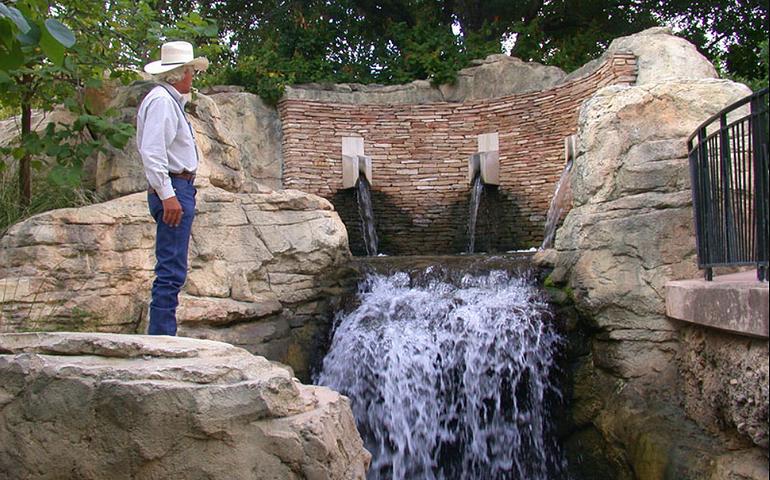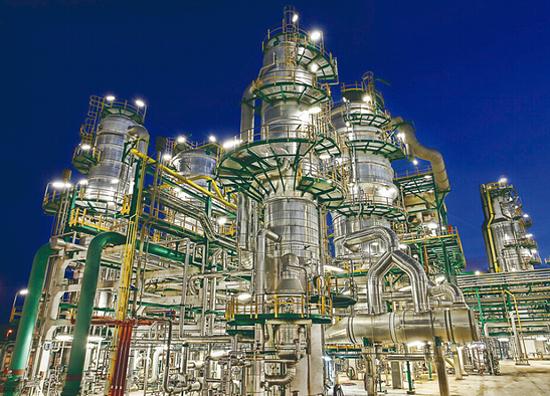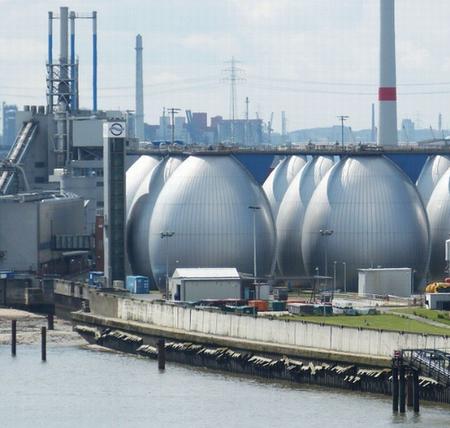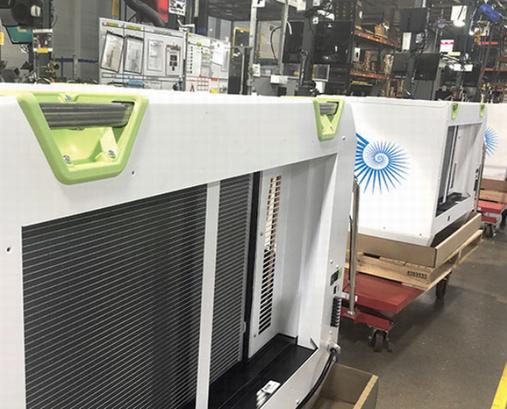Water Recycling and Reuse Catching on Across the World

By Sunny Lewis for Maximpact
WASHINGTON, DC, September 24, 2023 (Maximpact.com Sustainability News) – Drought is spreading across the planet as the climate heats up, stressing increasingly scarce water resources. To find the water they need, many governments and industries are looking to water recycling and reuse of the purified wastewater, and new technologies are being implemented everywhere in this fast-growing market.
By 2050, an estimated six billion people will face water scarcity due to climate change, pollution and increasingly unsustainable consumption and production, warns Inger Andersen, Executive Director of the Un Environment Programme, UNEP. “We need water for people, water for food, water for industry, but also water for nature. Failing the latter, we risk breaking natural cycles, interfering with soil moisture and the hydrological cycle and risking longer term impacts for people and for planet,” she told the executive board of the World Food Program in February.
Today, about four billion people, half of the global population, experience severe water scarcity at least one month of the year, while 2.3 billion people, or around one quarter of the global population, live in water-stressed countries.
To secure clean water sources, in March 2023 at the United Nations in New York, a coalition of governments launched the Freshwater Challenge, the largest-ever initiative to restore degraded rivers, lakes and wetlands, which are central to tackling the planet’s worsening water, climate and nature crises.
The Freshwater Challenge aims to restore 300,000 km of rivers and 350 million hectares of wetlands by 2030.
Championed by the governments of Colombia, DR Congo, Ecuador, Gabon, Mexico and Zambia, the Freshwater Challenge calls on all governments to commit to clear water targets in their updated national strategies and action plans, to deal with climate change and drought, and to urgently restore healthy freshwater ecosystems.
Stuart Orr, freshwater Lead at the nonprofit WWF International said, “The clearest sign of the damage we have done, and are still doing, to our rivers, lakes and wetlands is the staggering 83 percent collapse in freshwater species populations since 1970. The Freshwater Challenge puts the right goals and frameworks in place to turn this around – benefiting not only nature but also people across the world.”
But even so, water is still scarce in many places. To find the water they need, governments and industries are looking to water recycling and reuse, and new technologies are being implemented across the world in this fast-growing market.
Water recycling and reuse means treating wastewater to make it useable a second time, not for drinking, but for irrigation, industrial processes, and toilet flushing. This helps conserve freshwater resources, reduce water pollution, and improve water quality, and creates job opportunities in engineering, construction, and operations.
“All water is recycled. Every drop of water on Earth has been recycled many times through nature’s own purification systems. Nature does it using biology, and modern treatment plants work by speeding up nature’s own processes in a controlled environment,” writes environmental scientist Gregg Eckhardt of San Antonio, Texas, a city of 1.47 million residents that has been recycling and reusing water from the Edwards Aquifer <https://www.edwardsaquifer.net/>for decades.
Essential for life in central Texas, the Edwards Aquifer is one of the most prolific artesian aquifers in the world. Located on the eastern edge of the Edwards Plateau in Texas, it is the source of drinking water for two million people, and is the primary water supply for agriculture and industry in the region as well as for the 15 endangered species that inhabit the area.
But three years of drought and population growth have taken a toll on San Antonio’s main water source. In July, San Antonio recorded its hottest-ever 10-day stretch, with an average high temperature of 103.7 degrees. On August 18, the Edwards Aquifer dipped to its lowest level since July 1990.
Fortunately, scientists and water managers in the region have been recycling used water for years.
The most common water recycling method is called the Return Activated Sludge process, explains Eckhardt. With three levels of treatment, it is primarily a biologic system, but also uses basic physical and chemical principles to remove contaminants from water. The process takes roughly 18-24 hours to turn raw sewage into a valuable resource.
Still, water recycling and reuse solutions face challenges – high costs for large-scale projects, public concerns about water quality and safety, and technical challenges in removing pollutants.
Yet the global water recycling and reuse market is booming anyway, driven by increasing demand for water, as a growing world population strains freshwater resources.
There is also growing public awareness about the importance of water conservation, and in response, government initiatives worldwide promoting water recycling and reuse.
One such response is happening in the United States right now.
Biden Administration Invests in American Water
The U.S. Department of the Interior has just launched a new large-scale water recycling program and made US$180 million in initial funding available for projects aimed at creating new water supplies that are less vulnerable to drought and climate change.
President Joe Biden’s Investing in America agenda represents the largest investment in climate resilience in the nation’s history and is providing much-needed resources to enhance Western communities’ resilience to drought and climate change.
Through the Bipartisan Infrastructure Law, the federal Bureau of Reclamation, part of the Department of the Interior, is investing a total of $8.3 billion over five years for water infrastructure projects, including water purification and reuse, water storage and conveyance, desalination and dam safety.
“Water is essential to everything we do: feeding families, growing crops, powering agricultural businesses, sustaining wildlife and safeguarding Tribal subsistence practices,” said Interior Secretary Deb Haaland.
“As the climate crisis drives severe drought conditions and historically low water allocations, it will take all of us working together to safeguard our communities,” she said. “Through President Biden’s Investing in America agenda, we have historic new investments that are helping us to build a water supply that will sustain future generations.”
The funding opportunity, part of the Bureau of Reclamation’s WaterSMART <https://www.usbr.gov/watersmart/> program, is aimed at water management agencies considering or planning larger water reuse projects as part of strategies to address projected water supply shortages.
The new program will incentivize projects at a larger scale, with no cap on project size, and will play an important role in helping communities develop local, drought-resistant water supplies by turning unusable water sources into clean, reliable ones.
Reclamation Commissioner Camille Calimlim Touton said, “Through investments from President Biden’s Investing in America agenda, the Bureau of Reclamation is supporting work on multiple water recycling projects throughout the West. With this new program, we will be able to fund larger projects to grow local water supplies and serve more individuals. As we work to address the drought crisis, its critical we are advancing innovative, forward-looking solutions that help communities develop local, drought resistant water supplies.”
The initial investment of $180 million announced September 7 is part of a total $450 million for this new program. More information is available on the Grants.gov website by searching “R23AS00433.”
To date, the Bureau of Reclamation has invested $310 million from the Bipartisan Infrastructure Law for projects that advance water recycling and reuse.
Today’s announcement is one of the many investments the Biden-Harris administration is implementing as part of an all-of-government effort to make the Colorado River Basin and all the communities that rely on it more resilient to climate change, including the ongoing drought in the American West.
In order to allow more flexibility, this opportunity has multiple application deadlines in 2023 and 2024. Projects that secure and stretch reliable water supplies for drought-stricken states and communities, provide water quality improvements, reduce impacts on projects owned by federal or state agencies, or provide benefits to disadvantaged, underserved and Tribal communities will be prioritized.
Water recycling and reuse is a huge and growing market. The Dublin-based company Research and Markets says in a new report, “Global Markets and Technologies for Water Recycling and Reuse,” that the water recycling and reuse market has an Estimated Market Value in 2023 of US$19 billion and a Forecasted Market Value by 2028 of US$31.9 billion, a jump of nearly 13 billion in just five years.
Dow Cools Ethylene Cracker in Spain
Some of the world’s largest industrial operations are using recycled water to conserve freshwater for local communities.
The Dow Chemical Company is a producer and supplier of raw materials for the appliance, automotive, agricultural, chemical processing, electronics, oil and gas, and processed foods industries.
As part of the company’s operations performance 2025 sustainability goal, Dow has identified six of its manufacturing sites as key water-stressed sites where the company is committed to reducing the freshwater intake intensity by 20 percent.
At one of these sites, in Tarragona, Spain, an innovative collaboration with local companies and water boards is helping save water by reclaiming and reusing it again.
Water that already has been used for household and business purposes in the Spanish cities of Salou, Tarragona and Vilaseca is treated at the Camp de Tarragona Advanced Water Reclamation Plant, operated by Veolia Environnement S.A., Aguas Industriales de Tarragona S.A., and the government-owned Catalan water agency, L’Agència Catalana de l’Aigua.

The treated water is fed through a pipeline to various plants within the Camp de Tarragona petrochemical complex for alternative industrial use. Dow uses the treated water for cooling tower operations. The ethylene cracker cooling tower now uses up to 40 percent reclaimed water.
The project enabled Dow to reduce its freshwater use by 22 percent and effluent discharge by 49 percent. Depending on the season, this frees up more than 200 cubic meters per hour of water rights for the municipality.
Dow’s goal is to use 90 percent reclaimed municipal water in its cooling tower and to leverage this solution in other plants and industries. By reclaiming municipal wastewater for industrial purposes, Dow is able to minimize water stress and preserve freshwater to meet municipal, tourism and agricultural demands.
Dupont Squeezes Out Dye in India

The global corporation Dupont De Nemours Inc. is reusing water in a different way.
The fashion industry produces nearly 20 percent of global wastewater, and textile dyeing is the second largest polluter of water globally. But the sector is also an important source of economic empowerment. In the Indian economy, textiles make up 14 percent of industrial production, and the sector is the second-largest employer in both rural and urban areas, with nearly 35 million workers.
The city of Tirupur in Tamil Nadu state is India’s largest producer of cotton knitwear. With over 2,500 textile businesses located within a 25-mile radius, earning some $1billion, the region accounts for over 75 percent of the entire country’s knitwear exports.
But the many textile factories in such a small area concentrate the brine water discharged into local water systems, amplifying the negative environmental and public health impacts.
Some producers have only partial wastewater management systems in place, or none at all, in part because of a perception that such systems are too costly to install and maintain.
Now the Tirupur textile wastewater treatment plant is using DuPont™ FILMTEC™ FORTILIFE™ reverse osmosis technology to increase water efficiency to the point of zero liquid discharge of waste dye brine.
The technology helps operators squeeze out more water for reuse, reducing the amount of water sent for further treatment. The treatment plant is now able to remove all color and over 98 percent of Total Dissolved Solids, even when treating water with high TDS levels.
The plant has even experienced higher production yields with 75 percent lower cleaning costs and 10 percent energy cost savings, in addition to a longer membrane life.
The system serves nearly 1,000 textile units and over 1.6 million residents in Tirupur and surrounding areas. A daily total of around 125 million litres of water is supplied to the knitwear dyeing and bleaching industry, 25 million litres to the Tirupur municipality, which includes 60,000 slum dwellers, and 35 million litres is shared among the region’s remaining rural towns, villages and settlements.
Around 2,000 trucks make seven to 10 trips a day to supply water to the Tirupur textile industry. Households get water supply for two hours on alternate days.
Masdar Institute Offers New Technology in the UAE

Due to the growing consumption rates of the United Arab Emirates’ freshwater, the country’s limited natural groundwater resources have been drying up.
In Masdar City, located just six kilometers from the Abu Dhabi airport, scientists at Masdar Institute have determined that the UAE’s groundwater is not sufficiently replenishing itself due to a combination of over-pumping and a high evapotranspiration rate in the dry desert climate, where temperatures soar over 100 degrees Fahrenheit in summer.
Treated wastewater helps overcome this challenge.
Currently, Abu Dhabi uses 60 percent of its treated wastewater for landscaping and industrial purposes. The remaining 40 percent is released back into the Gulf, due to limited capacity of the resupply distribution networks.
Masdar Institute aims to support the development of new wastewater treatment technologies for the UAE as well as provide new insights into optimal approaches for wastewater reuse.
“In a water-scarce region that relies heavily on costly and energy-intensive seawater desalination to provide over 80 percent of the country’s freshwater, innovations for effective wastewater treatment are critically important to help meet the country’s growing demand for water,” explained Dr. Behjat AlYousuf, Interim Provost, Masdar Institute.
In Abu Dhabi, per capita water consumption has always been among the highest in the world, but now the emirate is consuming over 24 times its natural recharge rate – which refers to ability to naturally replenish groundwater reserves. This unsustainable level of water consumption underpins the UAE’s need to develop a robust water infrastructure.
“Masdar Institute aims to stay at the forefront of wastewater treatment research given its pivotal role in developing a robust water system in the UAE,” said Dr. Steve Griffiths, Vice President For Research, Masdar Institute.
“The wastewater treatment and reuse research conducted by our faculty contributes to the development of sustainable water resource management in the UAE,” he said.
Faculty and students from Masdar Institute’s Center for Water and Environment and the Institute Center for Smart and Sustainable Systems are developing a range of innovative technologies and solutions to treat Abu Dhabi’s municipal and industrial wastewater in a sustainable and cost-effective way to help the country meet its freshwater needs.
Using treated wastewater for cooling and landscaping frees up potable water for household use. But with groundwater levels depleting and population rising, extending the use of treated wastewater to reuse in edible crop agriculture is a possible way to sustainably meet growing freshwater demands in the UAE.
Research led by Dr. Linda Zou, professor of chemical and environmental engineering, seeks to produce freshwater for agriculture through an innovative hybrid approach, which combines two technologies – nano-filtration membranes and reverse osmosis.
“Relying on membrane processes alone, such as reverse osmosis, not only removes the contaminants, but also some beneficial nutrients,” Dr. Zou explained. “Through our hybrid approach, which involves the use of ion selective nano-filtration membrane processes combined with reverse osmosis to help filter the water, we are able to retain some of these valuable nutrients in the recycled water, which can then be used for both agricultural and industrial uses.”
This novel approach removes salt and other pathogens from the wastewater, while retaining the nutrients, plant fertilizers, calcium, magnesium and sulfur, needed to promote healthy plant growth, making it ideal for farms and horticulture nurseries. Dr. Zou has demonstrated the success of the nano-filtration and reverse osmosis membranes at Masdar Institute’s membrane pilot plants.
Innovative technologies like this will help supply water to parched areas as humanity struggles to reduce the blanket of greenhouse gases under which the planet is drying.